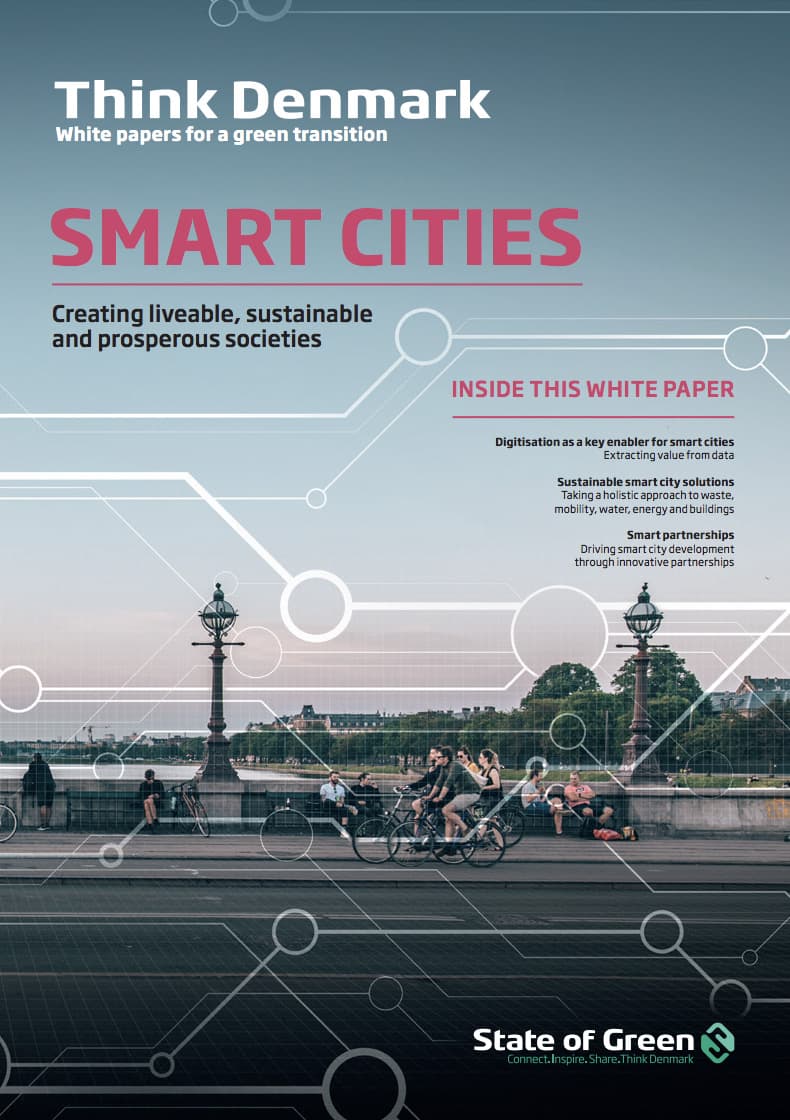Download our publication on smart cities
This article is part of our publication ‘Smart Cities’
Download nowPerspective
Smart cities
District cooling
District energy
+1


Energy-efficient heating and cooling solutions based on green energy is key to achieving sustainable cities. While many cities have opted for individual, on-site heating and cooling solutions, collective heating systems are considered a smart way to heat and cool urban areas.
District energy contributes to smart cities by supplying heating and cooling collectively instead of individually. District energy is feasible in densely populated areas, where demand for heating or cooling is high. It is an important part of a future integrated energy system. In Denmark, 64% of Danish
homes have their heating and hot tap water needs met by district heating.
Establishment of district energy systems requires large investments in infrastructure compared to individual heat supply options based on fossil fuels. However, the operational costs and the environmental impacts will be remarkably lower due to economies of scale. This is particularly true if the heat
is produced by efficient combined heat and power (CHP) plants and waste-to-energy plants, or if heat is produced by utilising excess heat from an industrial plant, for example a steel or cement plant. Likewise, co-generation of heating and cooling reduces the investments and increases the energy efficiency.

This article is part of our publication ‘Smart Cities’
Download nowDanish experience shows that when evaluating the feasibility of district heating, it is important to consider the costs over the full lifetime of a heat supply system. In many cases, district heating is the most feasible solution over a full lifecycle analysis. Large infrastructure investments will be recovered after some years by lower annual costs. Naturally, the viability of installing district heating is also dependent on multiple factors, including the heating and cooling density in the specific area.
An increasing share of electricity is produced from fluctuating sources such as solar and wind, which do not always meet the demand. An important feature of the smart city is that a district energy system, which includes large thermal storages for heat and cold combined with heat pumps, electric boilers and CHP plants, offers large capacities that can respond efficiently to fluctuating electricity production and prices.
Electric boilers consume large capacities of electricity at very low prices and can prevent the curtailment of excess power from solar or wind. The heat pumps have a steady consumption the majority of the year, but can be automatically interrupted at high prices. The CHP plants operate in the market only above an optimal electricity price level or if needed to support the power system. In fact, the thermal system acts like a huge electric battery – only in a much more cost-effective manner. In the longer term, the fast regulating CHP plants could be based on renewable gas, produced by surplus wind energy and stored in gas storage facilities.
solutions
Combined heat and power production
+6
publications
Combined heat and power production
+9